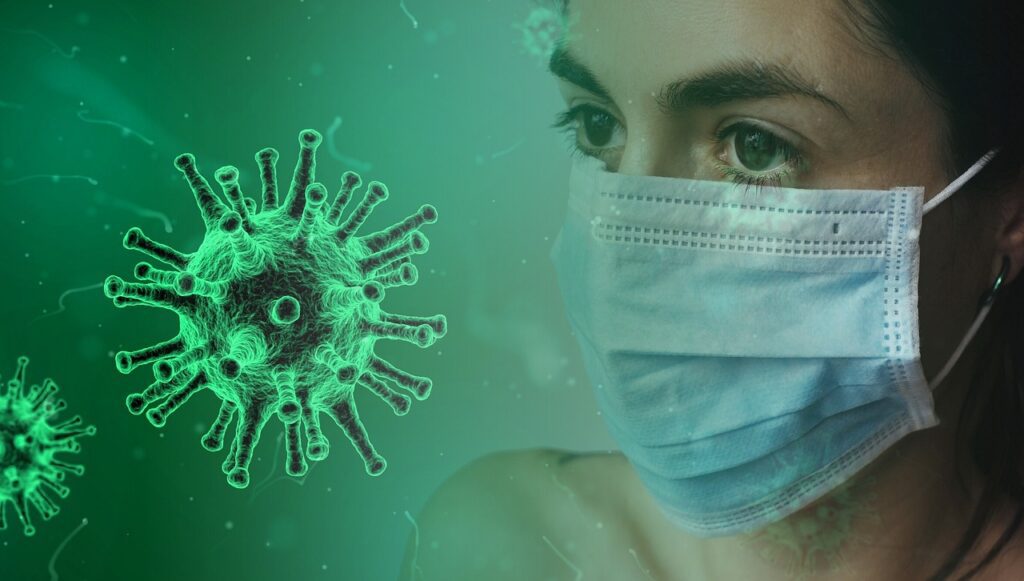In the wake of the COVID-19 pandemic, staying informed is key to safeguarding ourselves and our communities. From understanding symptoms to navigating vaccination options and testing protocols, there’s a lot to know. This comprehensive guide aims to provide clarity on various aspects of corona without overwhelming you with technical terminology.
I. Corona virus Symptoms
It presents a wide range of symptoms, ranging from mild to severe. Common symptoms include:
- Fever or chills
- Cough
- Shortness of breath or difficulty breathing
- Fatigue
- Muscle or body aches
- Headache
- New loss of taste or smell
- Sore throat
- Congestion or runny nose
- Nausea or vomiting
- Diarrhea
II. Corona virus Pandemic
The COVID-19 pandemic, caused by the novel coronavirus SARS-CoV-2, has had far-reaching impacts on global health, economies, and daily life. Understanding its origins, transmission dynamics, and preventive measures is important in fighting its spread.
III. Corona virus Vaccine
Vaccination remains one of the most effective tools in controlling the spread of virus. Approved vaccines, such as Pfizer-BioNTech, Moderna, and Johnson & Johnson, have undergone laborious testing to ensure safety and efficacy.
IV. COVID Test
Testing is important for identifying and isolating individuals diseased with COVID. PCR (polymerase chain reaction) tests and rapid antigen tests are commonly used to detect the presence of the virus.
V. Corona Cases
Tracking cases provides insight into the spread of the virus within communities. Real-time data from reliable sources, such as the World Health Organization (WHO) and the Centers for Disease Control and Prevention (CDC), helps inform public health responses.
VI. COVID 2023
In 2023, efforts to combat COVID continued, with vaccination campaigns ramping up globally. Research into new treatments and preventive measures also progressed, offering hope for controlling the pandemic.
VII. COVID CDC
The CDC plays a central role in providing guidance and resources for addressing the COVID pandemic. Its recommendations on vaccination, masking, and social distancing are based on the latest scientific evidence.
VIII. COVID Deaths
Unfortunately, it has resulted in millions of deaths worldwide. Understanding the factors contributing to humanity, such as age, underlying health conditions, and access to healthcare, is important in justifying the impact of the virus.
IX. Corona Treatment
While vaccines are essential for prevention, treatments are also vital for those who become infected. Antiviral medications, monoclonal antibodies, and supportive care help manage symptoms and reduce the severity of illness.
X. Guidelines
Following public health guidelines is important for preventing the spread of COVID-19. Recommendations may include wearing masks in public settings, practicing good hand hygiene, maintaining physical distance, and avoiding large gatherings.
XI. COVID Drive-Thru Testing at Walgreens
Walgreens and other pharmacies offer convenient drive-thru testing services. These testing sites help increase accessibility to testing for individuals experiencing symptoms or needing clearance for travel or work.
XII. COVID News
Staying updated on the latest COVID-19 news is necessary for making informed decisions. Consistent sources, such as government health agencies and reputable news outlets, provide accurate information on developments related to the pandemic.
XIII. Virus Test Kit
At-home virus test kits provide an additional tool for detecting the virus. These kits, which may use nasal swabs or saliva samples, offer convenience and privacy for individuals who prefer to test at home.
XIV. COVID 2024
As we enter 2024, the fight against COVID-19 continues. Vaccination efforts, ongoing research, and public health mediations remain critical in controlling the spread of the virus and justifying its impact.
XV. Corona virus Vaccine Side Effects
While Corona vaccines are generally safe, some individuals may experience side effects. Common side effects include pain at the injection site, fatigue, headache, muscle pain, chills, fever, and nausea. These side effects are usually mild and resolve within a few days.
Summary
We can work together to overcome this global health crisis by remaining informed and adhering to public health guidelines. Let us continue to prioritize safety, compassion, and resilience as we navigate these trying times together. Managing the complexity of the COVID pandemic requires understanding its symptoms, preventive measures, testing options, and treatment strategies.
Table:
Certainly! Below is a table outlining COVID symptoms and guidelines:
| Symptom | Description | Guidelines |
|---|---|---|
| Fever | Body temperature above 100.4°F (38°C) | – Stay home – Contact healthcare provider for guidance |
| Cough | Persistent dry or productive cough | – Wear a mask – Practice respiratory hygiene |
| Shortness of breath | Difficulty breathing or feeling breathless | – Seek medical attention immediately |
| Fatigue | Persistent tiredness or exhaustion | – Rest and stay hydrated – Avoid overexertion |
| Muscle or body aches | Generalized muscle pain or discomfort | – Rest and use over-the-counter pain relievers if necessary |
| Headache | Persistent or severe headache | – Rest and stay hydrated – Use over-the-counter pain relief |
| Sore throat | Pain or irritation in the throat | – Gargle with warm salt water – Use throat lozenges |
| Loss of taste or smell | Inability to detect taste or smell | – Isolate at home – Seek medical advice if persists |
| Congestion or runny nose | Nasal congestion or runny nose | – Use saline nasal spray – Rest and stay hydrated |
| Nausea or vomiting | Feeling of sickness or urge to vomit | – Stay hydrated – Rest and avoid heavy meals |
| Diarrhea | Frequent loose or watery stools | – Stay hydrated – Avoid dehydration |
Please note that these symptoms and guidelines are subject to change based on updates from health authorities. Always consult with a healthcare professional for personalized advice and guidance.



